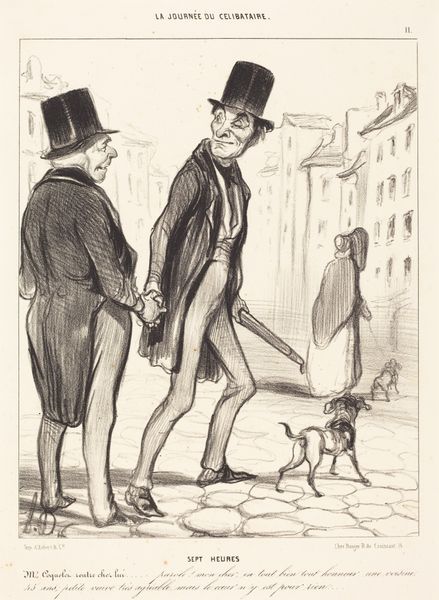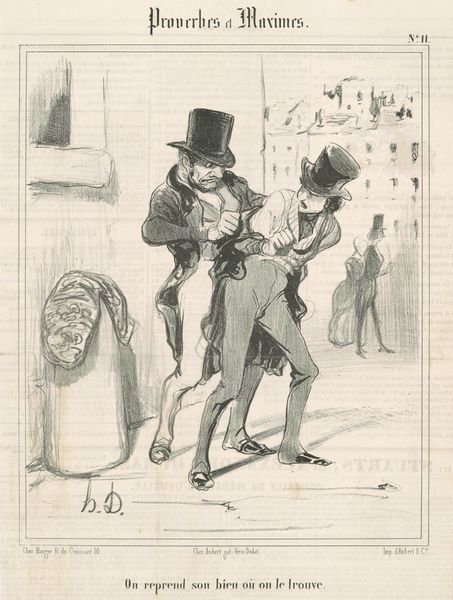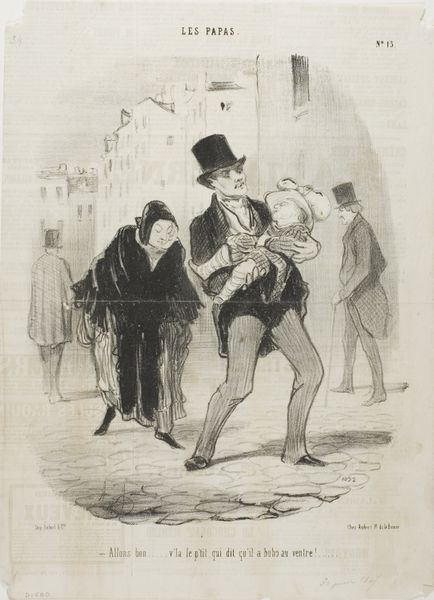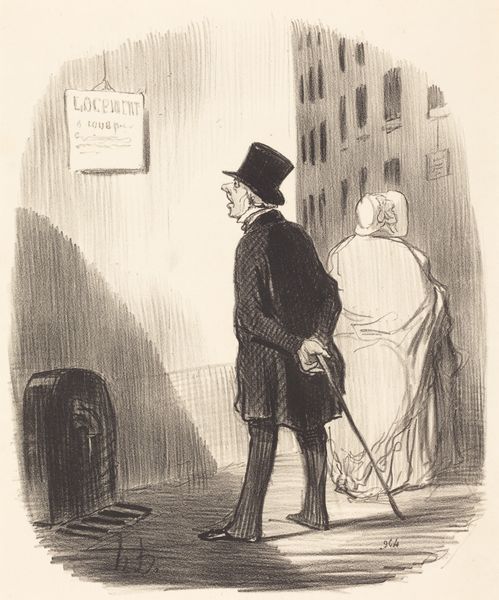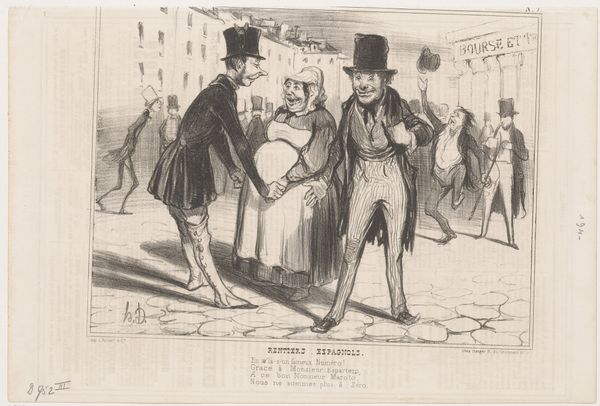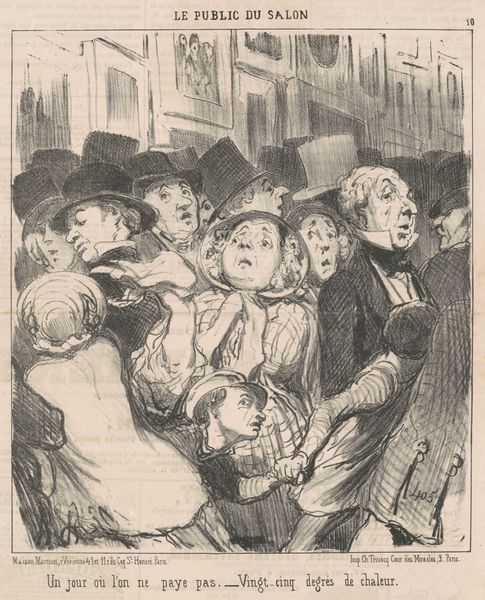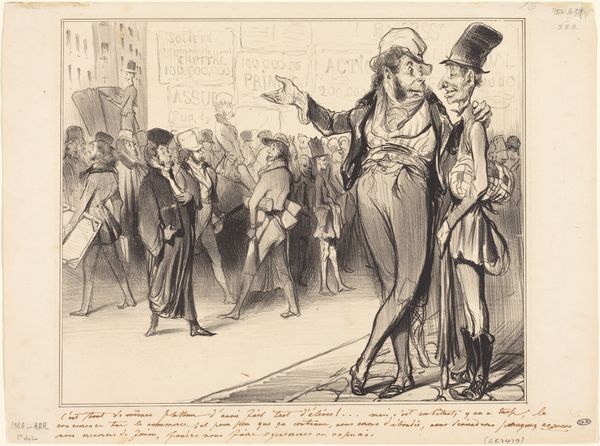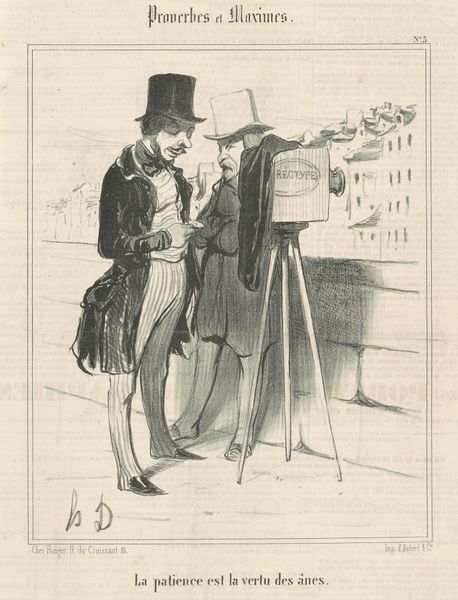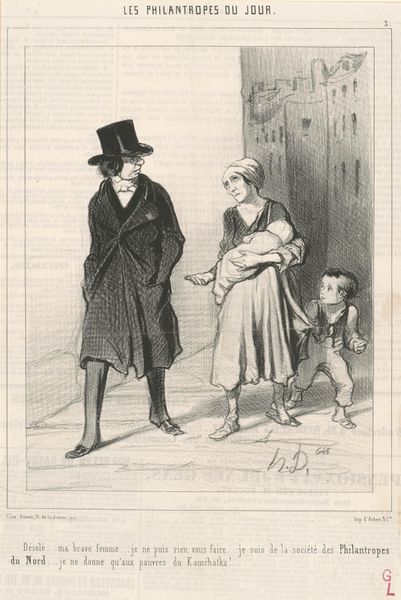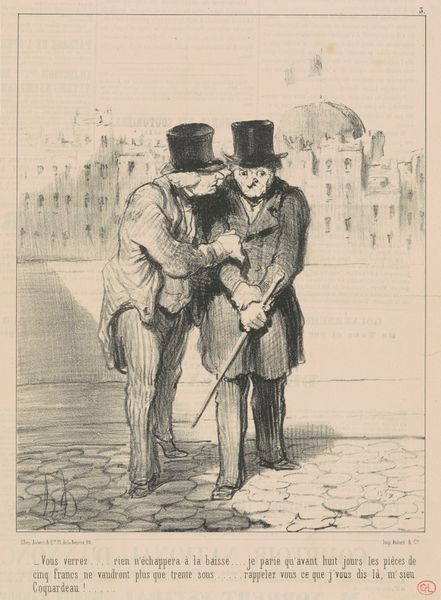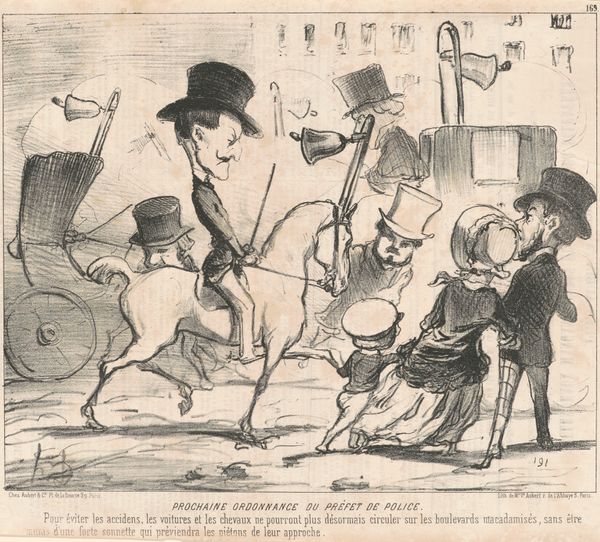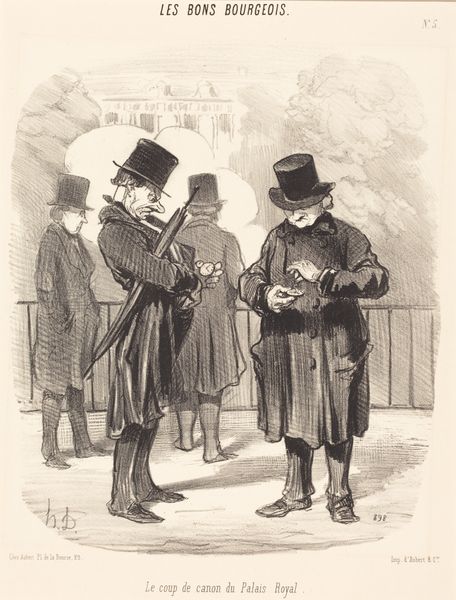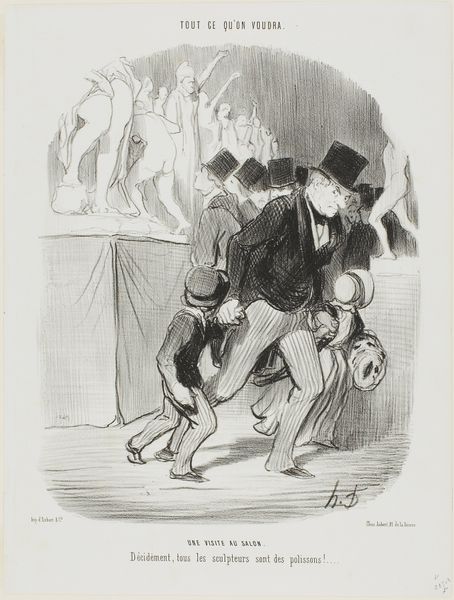
drawing, lithograph, print, pen
#
drawing
#
16_19th-century
#
lithograph
# print
#
caricature
#
figuration
#
romanticism
#
pen
#
genre-painting
#
realism
Copyright: National Gallery of Art: CC0 1.0
Curator: Looking at "Les Trois petits saints" by Honoré Daumier, likely a lithograph or drawing from the 19th century, what strikes you initially? Editor: A pervasive sense of somber theatricality. These exaggerated figures seem almost like puppets performing grief for an audience, or perhaps caricatures observing some civic occasion. The faces are almost grotesquely sad. Curator: Absolutely. Daumier was known for his biting social commentary through caricature. His mastery of lithography allowed him to mass-produce images for publications, directly engaging with public sentiment and political discourse. These works critiqued the bourgeoisie during periods of great social upheaval. What do you make of the materials themselves? Editor: The sharp, precise lines of the lithograph highlight the figures’ spindly frames and elongated noses. There’s also the socio-political aspect of lithography as a medium—its affordability making satire accessible to a wider public, a stark contrast to the painted portraits of the elite. What are your thoughts on how this work and Daumier's other prints were perceived during his life, considering the printmaking boom? Curator: His works were perceived both as powerful social critique and low art, owing to the process and context. Lithography allowed for a democratization of art and criticism. Figures like Daumier actively disrupted artistic hierarchies of painting vs. prints. Think about the implications of consumption—cheap prints circulating commentary versus commissioned portraits reserved for the wealthy few. What about how we contextualize "high art" and the labor that produces it, then and now? Editor: Daumier seems to be turning the tables, portraying these “saints” with a moral ambiguity that invites viewers to reconsider the conventional subjects of veneration. It pushes us to question not just who is being represented, but why, and for what effect. Considering this in light of mid-19th-century political ferment gives this scene an unmistakable tension. Curator: A perfect summation. It also speaks to art's role in reflecting, and shaping, political discourse. And for me, Daumier's choices push a reevaluation of technique, purpose, and audience. Editor: It really allows us to appreciate the complicated interplay between art, politics, and societal values within its period.
Comments
No comments
Be the first to comment and join the conversation on the ultimate creative platform.
